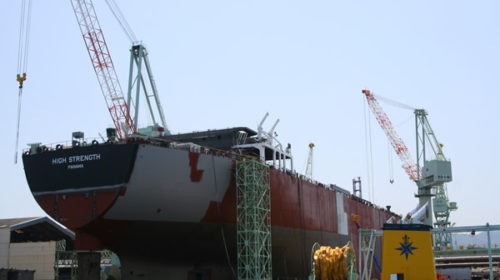Overview of Port Industry in China
The international trade value in China showed a steady general trend of increase, rising from CNY 9,470.0 billion in 2010 to CNY 15,662.4 billion in 2017, representing a CAGR of 7.5%. The increase in international trade value was driven by several factors. These include China’s accession to the WTO, which led to an expansion of the number of subsectors of trade services. In addition, China’s legal system has improved which in turn has enabled stronger enforcement of fair trade through monitoring and combating unfair trade practices.
The China coastal port throughput increased from 8.9 billion tonnes in 2010 to 14.0 billion tonnes in 2017, representing a CAGR of approximately 6.7%. The increase in coastal port throughput was attributed to the considerable increase in both domestic and foreign trade throughput. The growth rate decreased between 2010 and 2015, due to the slow economic recovery from the global financial crisis in 2008 which led to a weaker demand from overseas markets for goods manufactured in China, and recovered between 2016 and 2017 due to rising domestic consumption in China.
Economic growth is a major driver affecting port throughput. The GDP value in China increased from CNY 41,070.8 billion in 2010 to CNY 81,203.8 billion in 2017 and is forecast to rise to CNY 113,620.5 billion in 2021. The growth in China’s GDP was mainly attributed to large-scale capital investment and rapid productivity growth. The GDP growth rate is forecast to decrease to 6.0% in 2021.
The port terminal services industry has grown rapidly since the early 2000’s due to several factors. Firstly, the Chinese government enacted reforms in order to make the port terminal services industry more market orientated. Secondly, the increased output of the manufacturing sector increased the imports of raw materials as well as the export of finished products.
The supply chain of the port terminal services industry primarily involves the following parties: cargo owners, shipping line companies, port terminal service providers and local logistics companies. In the port terminal services industry, there can be more than one service provider within the same port since companies often focus on providing a specific service. These services include piloting and tug boat services, vessel uploading and unloading, and cargo storage. The major customers of port terminal service providers in China are cargo owners and shipping companies. The type of customers is determined based on the economic focus and industry structure in different regions. The port terminal services industry is concentrated in the five major port clusters in China. These include Bohai Gulf, Yangtze River Delta, Southeastern Coast, Pearl River Delta and Southwestern Coast.
The transportation volume of cargo throughput at ports in China has increased from 3,789.5 million tonnes in 2010 to 6,657.2 million tonnes in 2017, representing a CAGR of 8.4%.The revenue of the port terminal services industry in China increased from approximately USD 34.6 billion in 2010 to USD 53.5 billion in 2016, representing a CAGR of 7.5%. The revenue of the port terminal services industry in China is expected to increase from approximately USD 56.9 billion in 2017 to USD 64.7 billion in 2021, representing a CAGR of 3.3%.
https://www.cri-report.com/industry/logistics-transport/the-global-refrigerated-sea-transportation-market-is-expected-to-witness-decent-growth-during-the-forecast-period/
https://www.cri-report.com/industry/logistics-transport/global-cargo-transportation-market-to-decrease-from-2021/

